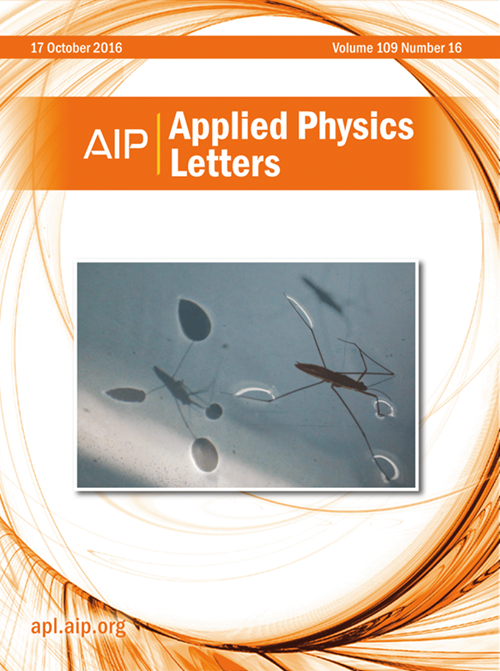超薄金属薄膜上热激发电磁消失场的观察
IF 3.5
2区 物理与天体物理
Q2 PHYSICS, APPLIED
引用次数: 0
摘要
利用被动散射型扫描近场光学显微镜,研究了金超薄金属薄膜(UTMFs)在长波红外(14.1 μm)范围内的热激发电磁倏逝场。在厚度为5.6 ~ 69.4 nm的金utmf上测量近场(NF)信号。在临界厚度(dc = 9.2 nm)附近观察到NF信号强度急剧下降,标志着金属到绝缘体的转变。这种下降与自由电子密度N的降低有关,这是由结构变化引起的,如岛状形成、裂缝和薄膜厚度的减少。这些限制限制了电子的运动,降低了等离子体的频率(ωp),正如厚度相关的德鲁德模型所描述的那样。此外,对NF信号衰减长度的测量揭示了消失场的热相互作用范围,为近场传热提供了见解。在局域态密度理论的支持下,这些发现强调了探针尖端下的电子密度在NF信号中的作用。这些关于薄膜结构、电子动力学和NF热辐射的见解在纳米级热管理和红外传感技术中有应用。本文章由计算机程序翻译,如有差异,请以英文原文为准。
Observation of the thermally excited electromagnetic evanescent field on ultrathin metallic films
This study explored thermally excited electromagnetic evanescent fields on gold ultrathin metallic films (UTMFs) using a passive scattering-type scanning near-field optical microscope in the long-wavelength infrared range (14.1 μm). Near-field (NF) signals were measured on gold UTMFs with thicknesses ranging from 5.6 to 69.4 nm. A sharp drop in the NF signal intensity was observed near the critical thickness (dc = 9.2 nm), marking the metal-to-insulator transition. This decline was linked to reduced free electron density N, caused by structural changes like island formation, cracks, and reduced film thickness. These constraints confined electron motion, lowering the plasma frequency (ωp), as described by a thickness-dependent Drude model. Additionally, measurements of NF signal decay length revealed the thermal interaction range of evanescent fields, providing insights into near-field heat transfer. Supported by the local density of states theory, the findings emphasize the role of electron density beneath the probe tip in NF signals. These insights into film structure, electron dynamics, and NF thermal radiation, have applications in nanoscale thermal management and infrared sensing technologies.
求助全文
通过发布文献求助,成功后即可免费获取论文全文。
去求助
来源期刊

Applied Physics Letters
物理-物理:应用
CiteScore
6.40
自引率
10.00%
发文量
1821
审稿时长
1.6 months
期刊介绍:
Applied Physics Letters (APL) features concise, up-to-date reports on significant new findings in applied physics. Emphasizing rapid dissemination of key data and new physical insights, APL offers prompt publication of new experimental and theoretical papers reporting applications of physics phenomena to all branches of science, engineering, and modern technology.
In addition to regular articles, the journal also publishes invited Fast Track, Perspectives, and in-depth Editorials which report on cutting-edge areas in applied physics.
APL Perspectives are forward-looking invited letters which highlight recent developments or discoveries. Emphasis is placed on very recent developments, potentially disruptive technologies, open questions and possible solutions. They also include a mini-roadmap detailing where the community should direct efforts in order for the phenomena to be viable for application and the challenges associated with meeting that performance threshold. Perspectives are characterized by personal viewpoints and opinions of recognized experts in the field.
Fast Track articles are invited original research articles that report results that are particularly novel and important or provide a significant advancement in an emerging field. Because of the urgency and scientific importance of the work, the peer review process is accelerated. If, during the review process, it becomes apparent that the paper does not meet the Fast Track criterion, it is returned to a normal track.
 求助内容:
求助内容: 应助结果提醒方式:
应助结果提醒方式:


